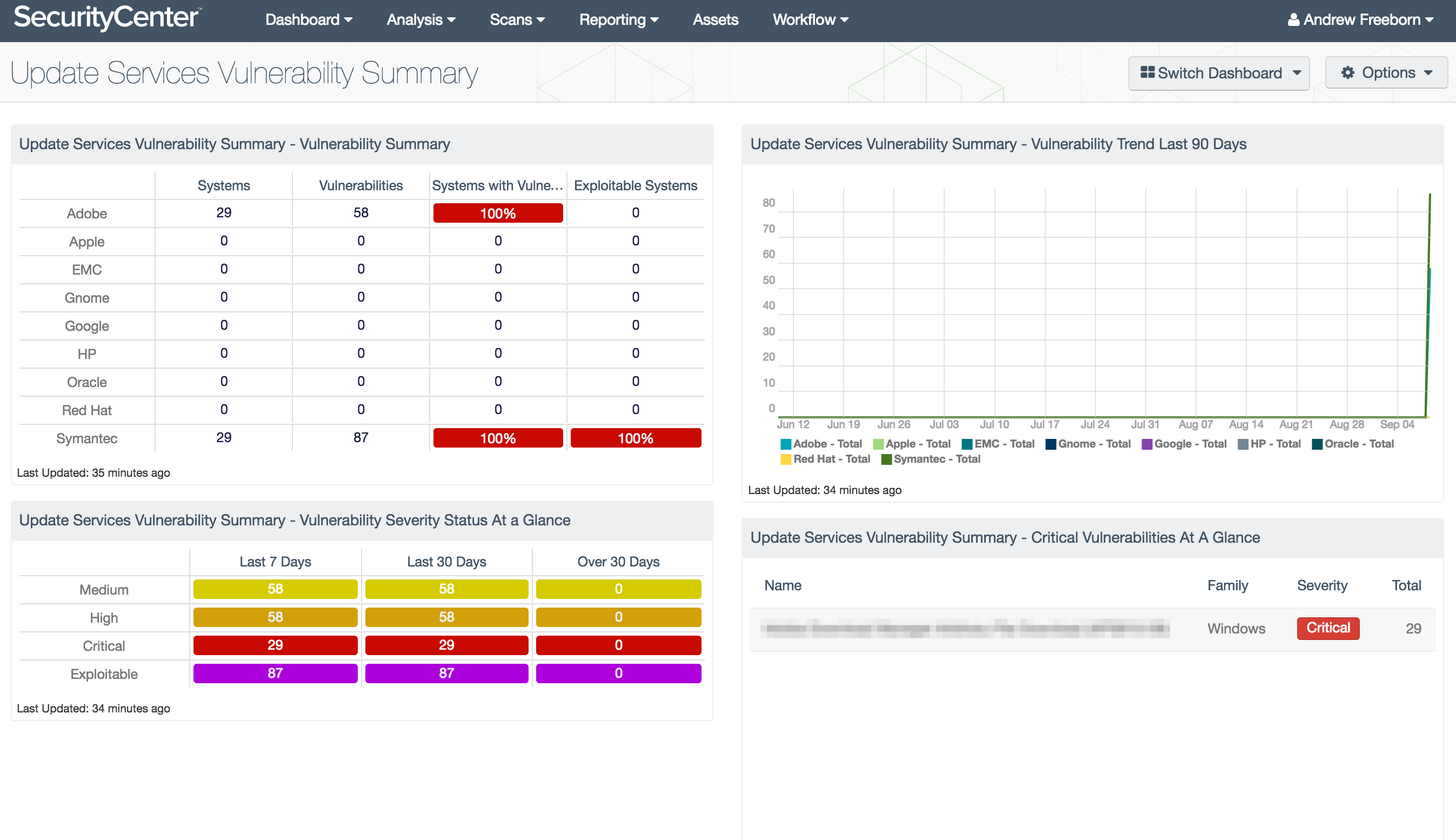by Andrew Freeborn
September 13, 2016

Applications built today are more complex and have more internal architecture than applications built 10 years ago. Commonly coupled with applications is additional software such as self-updating mechanisms to keep the main application up to date. The secondary updater application can keep the main application up to date on anti-virus definitions, application files that help render a page, or even completely update the main application to a new version. Decoupling the updating mechanism from the main application allows developers to hone the abilities within the main application. Loosely connected features in one application can introduce more problems than developers try to solve and make maintenance of the application more unwieldy.
Analysts need to know where software resides in an organization, regardless of the function. Almost every piece of software has or will have vulnerabilities that need to be identified and attention to remediate or mitigate the risk. Examples of software identified in this dashboard include Oracle Java Auto Updater, Adobe Update Manager, and Symantec Live Update. These applications are essential to making sure the respective applications they support are kept up to date. While the updater software may be perceived as an application with low risk to the organization, this type of software can instrument and change software that organizations rely upon. The updater software can be vulnerable with common software risks such as SQL injections shown in this advisory by Symantec for their LiveUpdate Administrator software.
The Common Platform Enumeration (CPE) filter is used to identify the software programs referenced in this dashboard. According to NIST, the CPE is a structured naming scheme for information technology systems, software, and packages. Based upon the generic syntax for Uniform Resource Identifiers (URI), CPE includes a formal name format, a method for checking names against a system, and a description format for binding text and tests to a name. Tenable assigns CPE’s to plugins where appropriate. This allows analysts to search for common CPE strings such as cpe:/a:adobe:adobe_update, cpe:/a:oracle:java_auto_updater, and cpe:/a:symantec:live. These particular CPE strings used in this dashboard can be found in the CPE database by searching for the product names for the corresponding CPE string. Associating CPE strings with vulnerabilities allow the analysts a greater view into separating operating system vulnerabilities from application vulnerabilities, and adds to the level of vulnerability detail provided to the organization.
Within this dashboard, analysts are provided information on where software updater software exists in the organization. Depending on the policies of the organization, a vendor’s client side software updater may not be allowed. This dashboard shows what hosts have this type of software from vendors such as Adobe, Apple, HP, Symantec, and Oracle to keep systems compliant with organizational policies. If organizations do choose to allow and use a vendor’s solution for application updates, analysts can see vulnerabilities associated with the software over time and by severity. Analysts expect to fix Adobe and Microsoft software on a monthly basis, but may not consider that the software updating software may also need attention. Organizations can be aware of vulnerabilities with this software and identify where in the organization these applications reside with Tenable Nessus.
This dashboard is available in the SecurityCenter Feed, a comprehensive collection of dashboards, reports, Assurance Report Cards, and assets. The dashboard can be easily located in the SecurityCenter Feed under the category Threat Detection & Vulnerability Assessments. The dashboard requirements are:
- SecurityCenter 5.4
- Nessus 6.8.1
Tenable SecurityCenter provides continuous network monitoring, vulnerability identification, and security monitoring. SecurityCenter is continuously updated with information about advanced threats and zero-day vulnerabilities, and new types of regulatory compliance configuration audit files. Tenable constantly analyzes information from our unique sensors, delivering continuous visibility and critical context, enabling decisive action that transforms your security program from reactive to proactive. Active scanning examines the updater software applications on the systems, running processes and services, detection of vulnerable software applications, configuration settings, and additional vulnerabilities. With this information, analysts have greater insight to determine if supported and up-to-date updater software applications are operating within the organization. Tenable enables powerful, yet non-disruptive, continuous monitoring of the organization to ensure vulnerabilities are available to analysts.
This dashboard contains the following components:
- Critical Vulnerabilities At A Glance: This component displays the top critical updater software vulnerabilities detected in the organization
- Vulnerability Severity Status At A Glance: This component gives a visual report on vulnerability remediation efforts for updater software applications
- Vulnerability Summary: This component displays updater software technologies vulnerabilities by vendor
- Vulnerability Trend Last 90 Days: This component displays a trend line of the number of vulnerabilities with the updater software applications over the last 90 days